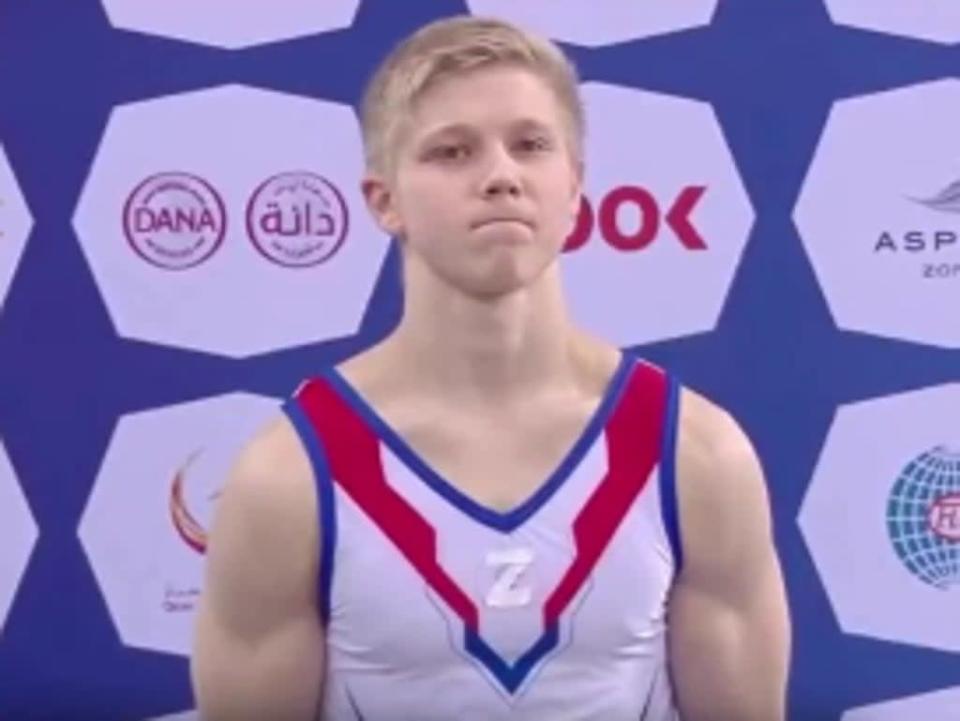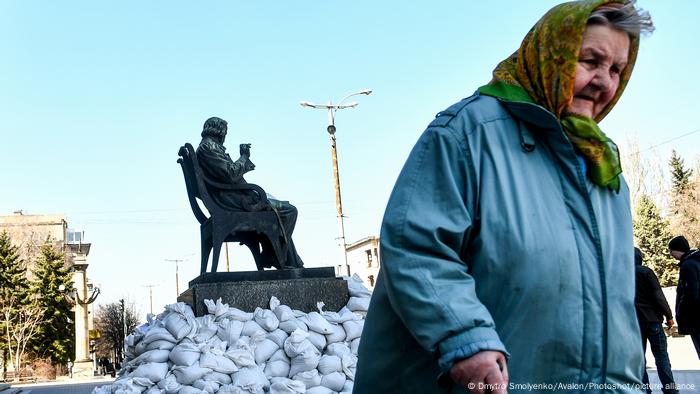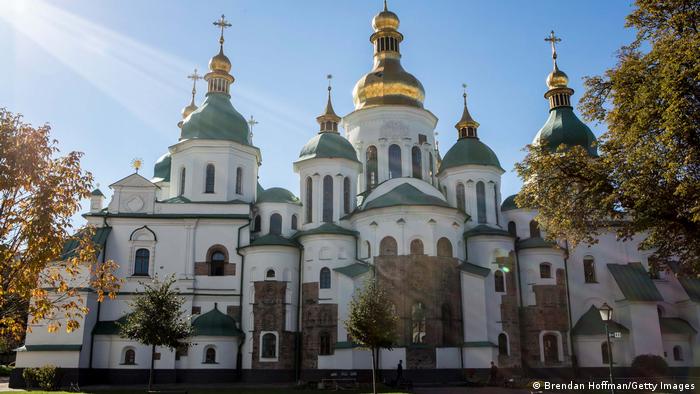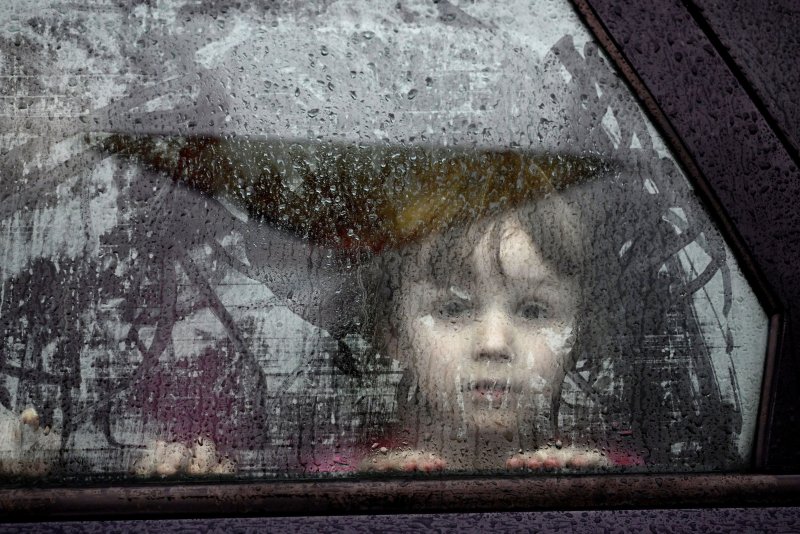
A child's toy horse was abandoned in the blast and left blood-soaked on the ground, a sad testament to the carnage left by Russian rockets shelling at the railway station in Kramatorsk.
Bethany Dawson
Sat, April 9, 2022

Remains of a missile are seen near a rail station, amid Russia's invasion of Ukraine, in Kramatorsk, Ukraine April 8, 2022.REUTERS/Stringer
Two Russian rockets hit a train station in Kramatorsk, Ukraine, on April 8, killing 52 people and injuring nearly 100.
Photos show the devastation caused by the blast that turned the station into a killing zone.
Content warning: this article contains pictures that some readers may find distressing.
Two Russian rockets hit a Ukrainian train station in Kramatorsk, a town in Donetsk, part of the Donbas region, on April 9.
Reuters reports that the train station was filled with people hoping to evacuate from the war.
The blast killed at least 52 people and injured almost 100 others. As a result, President Volodymyr Zelenskyy is now demanding a "global response" in condemning Russia, AP report.
It also reports that Russia denies responsibility for the attack, but Ukrainian and Western governments have explicitly stated the attack was by Putin's forces.
Photos from the scene show the extent of the atrocity inflicted by this blast.
At least 52 people were killed when Russian rockets hit the railway station packed with Ukrainians fleeing the war.

A body lies covered after Russian shelling at the railway station in Kramatorsk, Ukraine, Friday, April 8, 2022.AP Photo/Andriy Andriyenko
A 1,000 civilians went to Kramatorsk station to escape the anticipated Russian offensive in eastern Ukraine.
A trail of blood leads to the railway station's booking hall.

Russia shelled the railway station in Kramatorsk, Ukraine, Friday, April 8, 2022.AP Photo/Andriy Andriyenko
Ukrainian President Zelenskyy has called this attack a "war crime," and joined a number of officials in telling civilians to evacuate the eastern Ukraine, according to the Wall Street Journal.
A Russian rocket that struck a Ukrainian train station and killed dozens of people had 'For the children' written on its side.

Remains of a missile are seen near a rail station, amid Russia's invasion of Ukraine, in Kramatorsk, Ukraine April 8, 2022.REUTERS/Stringer
A Russian rocket that struck a train station and killed dozens in eastern Ukraine on Friday had a Russian phrase meaning "For the children" written on its side, Ukrainian officials said.
At least 52 people were killed, and over 100 were injured after two Russian rockets hit the train station in Kramatorsk, which is in the Donetsk oblast.
The phrase — seen scrawled in white on the side of a purported Russian rocket in photos and video from the scene of the attack — translates as a message that the missile was sent in vengeance for children, not that it was intended to be used on children, explainedInsider's Jake Epstein.
Russian propaganda has accused Ukrainian troops of killing children even as Russian forces fire on civilian targets.
At least five children were killed in the attack, according to a post from Pavlo Kyrylenko, the governor of the Donetsk region.
Since the invasion of Ukraine started on February 24, at least 169 children have been killed, according to the UN. However, the actual figure is believed to be much higher.
Outside the station burning cars with bodies around it shows the violence of the attack.

A car burns as smoke from the fire rises after the strike.OLEKSIY MERKULOV Ð DONECHCHYNA via Reuters
Thousands of civilians – older people, women, and children – went to the Kramatorsk railway station to start a journey to safety, but it turned into a killing zone.
"Lacking the strength and courage to stand up to us on the battlefield, they are cynically destroying the civilian population," said President Zelenskyy in an Instagram post, referring to Russian forces. "This is an evil that has no limits. And if it is not punished, it will never stop."
A man holds aloft a blood-stained animal carrier after the rockets struck the railway station.

Even pets were caught in the blast
Since the invasion of Ukraine started on February 24, at least 169 children have been killed, according to the UN. However, the actual figure is believed to be much higher.
Outside the station burning cars with bodies around it shows the violence of the attack.

A car burns as smoke from the fire rises after the strike.OLEKSIY MERKULOV Ð DONECHCHYNA via Reuters
Thousands of civilians – older people, women, and children – went to the Kramatorsk railway station to start a journey to safety, but it turned into a killing zone.
"Lacking the strength and courage to stand up to us on the battlefield, they are cynically destroying the civilian population," said President Zelenskyy in an Instagram post, referring to Russian forces. "This is an evil that has no limits. And if it is not punished, it will never stop."
A man holds aloft a blood-stained animal carrier after the rockets struck the railway station.

Even pets were caught in the blast
OLEKSIY MERKULOV – DONECHCHYNA via Reuters
President Zelenskyy said that there were "thousands" of people at the station hoping to flee Ukraine, and whole families — including pets — were caught in the blast.
Scores had flocked to the train station on Friday to evacuate from the eastern Donbas region, as Western intelligence and NATO warned Russian troops are repositioning away from the northern Kyiv region and will focus their efforts on the east.
Photos and videos circulating on social media from Ukrainian officials and journalists showed a blood-stained sidewalk, strewn with luggage, strollers, and other belongings.
Bodies lay covered after the Russian shelling at the railway station in Kramatorsk.

Bodies lay at the railway station in Kramatorsk, Ukraine, Friday, April 8, 2022.AP Photo/Andriy Andriyenko
Photos and videos circulating on social media from Ukrainian officials and journalists showed a blood-stained sidewalk, strewn with luggage, strollers, and other belongings.
Ukraine's Foreign Minister Dmytro Kuleba tweeted after the strike: "This was a deliberate slaughter. We will bring each war criminal to justice."
President Zelenskyy said that there were "thousands" of people at the station hoping to flee Ukraine, and whole families — including pets — were caught in the blast.
Scores had flocked to the train station on Friday to evacuate from the eastern Donbas region, as Western intelligence and NATO warned Russian troops are repositioning away from the northern Kyiv region and will focus their efforts on the east.
Photos and videos circulating on social media from Ukrainian officials and journalists showed a blood-stained sidewalk, strewn with luggage, strollers, and other belongings.
Bodies lay covered after the Russian shelling at the railway station in Kramatorsk.

Bodies lay at the railway station in Kramatorsk, Ukraine, Friday, April 8, 2022.AP Photo/Andriy Andriyenko
Photos and videos circulating on social media from Ukrainian officials and journalists showed a blood-stained sidewalk, strewn with luggage, strollers, and other belongings.
Ukraine's Foreign Minister Dmytro Kuleba tweeted after the strike: "This was a deliberate slaughter. We will bring each war criminal to justice."


























